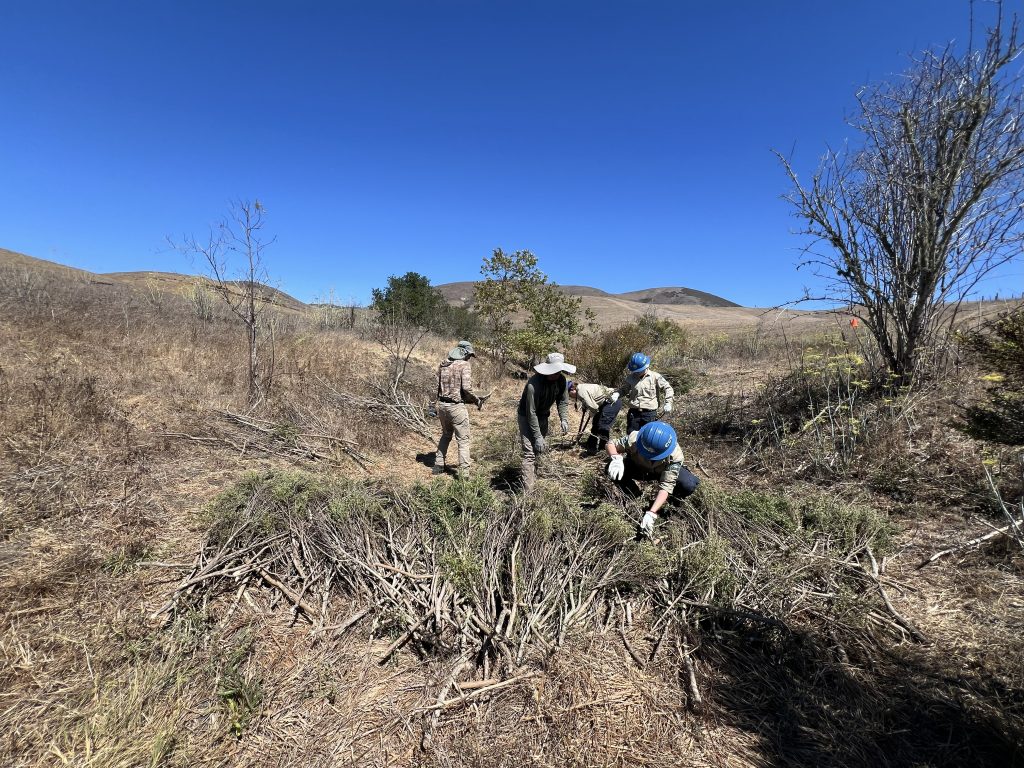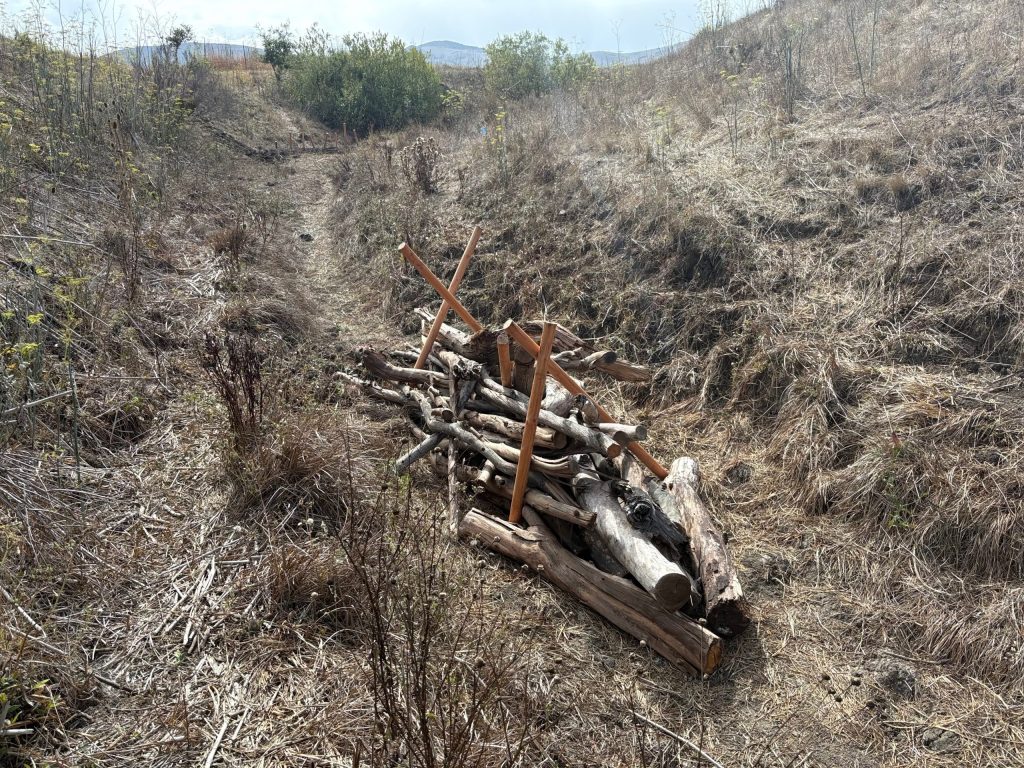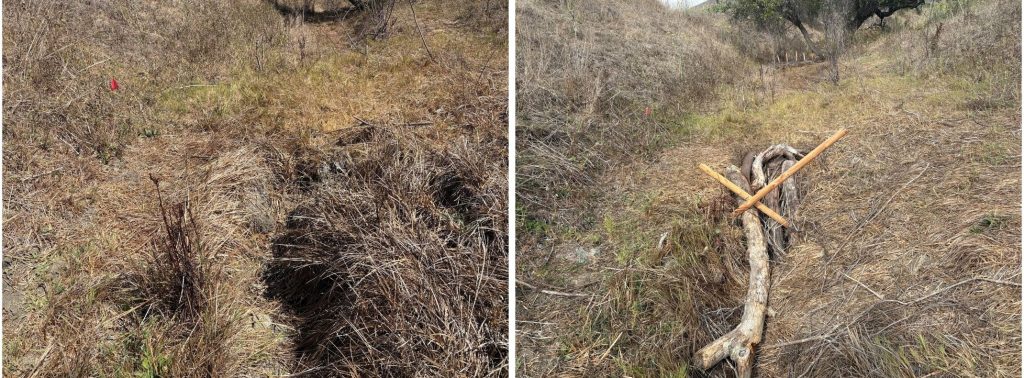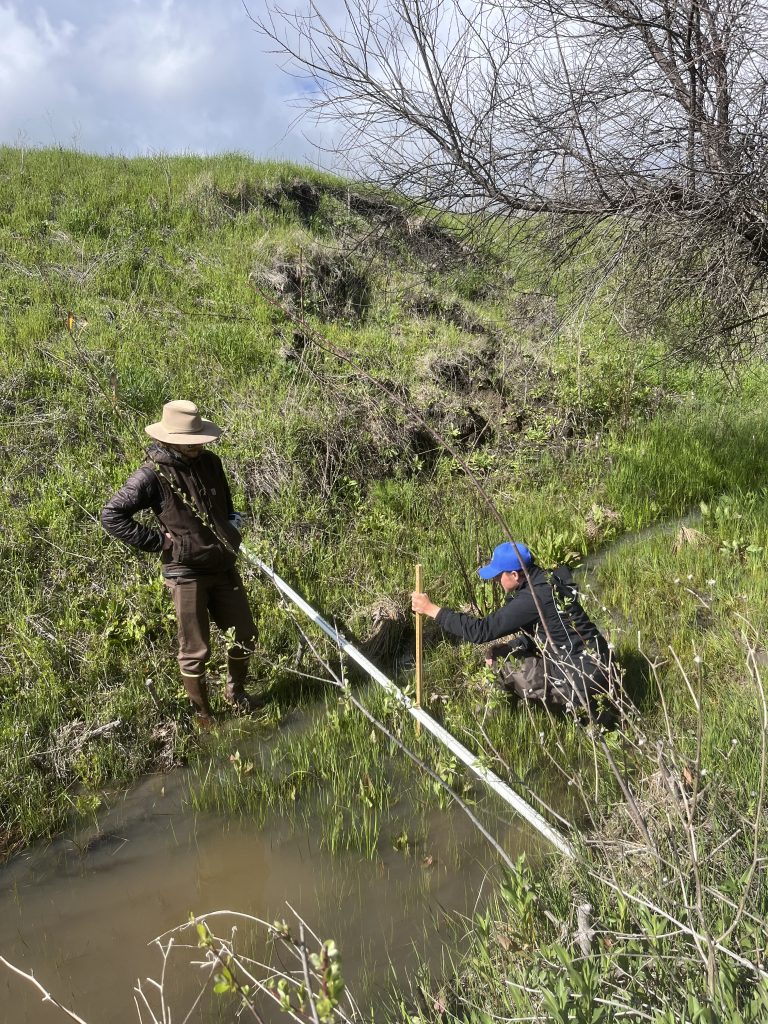One of the Estuary Program’s goals is to restore habitats to better support wildlife and improve ecosystem function. Creek restoration can involve highly engineered designs and heavy equipment to bring back functioning ecosystems. Over the past year, the Estuary Program and partners have worked to plan, permit, and implement a project that uses a lighter touch. We are utilizing low-tech process-based restoration to improve creek habitat on Walters Creek.
Process-based restoration (PBR) techniques vary depending on the site and region where the project is taking place. Our project uses hand-built structures to mimic natural processes and creek function. These structures help sediment to settle to increase elevation of the creek or ground. They can also encourage sediment to move from one location and deposit at another.
Why Walters Creek?
Erosion on this small creek has historically contributed large amounts of sediment to the Morro Bay watershed. This erosion lowered the elevation of the creek channel. While erosion is a natural and beneficial process, excess sedimentation can degrade habitats over time.

The project goal is to capture more sediment in the channel while increasing the duration of surface flow. Walters Creek typically flows for only a few months in the spring and runs dry by midsummer. Increased surface flows can expand native plant and wetland habitat for sensitive species like California red-legged frog and southwestern pond turtle.
Implementation Work on Walters
In September, we worked with partners to implement forty structures on Walters Creek to help improve its function and habitat. The work was supported on the ground by over thirty California Conservation Corpsmembers (CCC) and Forestry Corps members. They are part of a youth workforce development program that provides training in fields such as fire management and habitat restoration.

These low-tech PBR structures vary by site and region based on the natural materials present, flow regime of the stream, and other factors.
Build Like a Beaver

The team built beaver dam analogs (BDAs) at Walters Creek using layers of soil, brush, and wood to encourage sediment deposition and water ponding upstream of the structure. The structures have a ramp of sediment on the upstream side and a lattice of brush and wood on the downstream side. The front of the structure acts like a filter, slowing down the water’s path through the mud and vegetation. The team installed large pieces of wood and wooden posts on the downstream end to stabilize the lattice structure.

PALS Lend a Helping Hand
The team also installed post-assisted log structures (PALS) to mimic wood accumulation in the stream, providing instream habitat and slowing water velocity. PALS consist of interlocking wood pieces secured together with vertical posts. When PALS are attached to the bank, they can support increased sinuosity, or curviness, of the creek. This creates localized erosion to build up the channel elevation downstream of the structure.

Addressing Headcuts

Headcuts are areas that tend to erode due to the type of sediment present. They are made worse by fast–moving waters. A headcut will often continue to migrate upstream until it reaches a more stable sediment layer. Headcut treatment involves layering and packing coyote brush or oak branches into the headcut. Larger wood and posts can be installed to stabilize the structure. As water hits the structure, it will slow down, preventing future erosion. In some cases, the vegetation will trap enough sediment that the hole created by the headcut will fill in.
A Conversation With the Creek

Process-based restoration is an iterative management technique that evolves with how the creek and structures respond to water on the landscape. We will continue to install additional structures and add to or repair existing sites for the next five years. The Estuary Program and partners also will track changes in vegetation, elevation, wildlife presence, and surface flows over time. We are excited to see how the structures respond to winter rains and how we can continue to improve creek function through low-tech process-based approaches.
Help us protect and restore the Morro Bay estuary!
- Donate to the Estuary Program today and support our work in the field, the lab, and beyond.
The Estuary Program is a 501(c)3 nonprofit. We depend on funding from grants and generous donors to continue our work. - Support us by purchasing estuary-themed gear from ESTERO. This locally owned and operated company donates 20% of proceeds from its Estuary clothing line and 100% of Estuary decal proceeds to the Estuary Program. Thank you, ESTERO!
- Purchase items from the Estuary Program’s store on Zazzle. Zazzle prints and ships your items, and the Estuary Program receives 10% of the proceeds.
- Subscribe to our seasonal newsletter: Between the Tides!
- We want to hear from you! Please take a few minutes to fill out this short survey about what type of events you’d like to see from the Estuary Program. We appreciate your input!